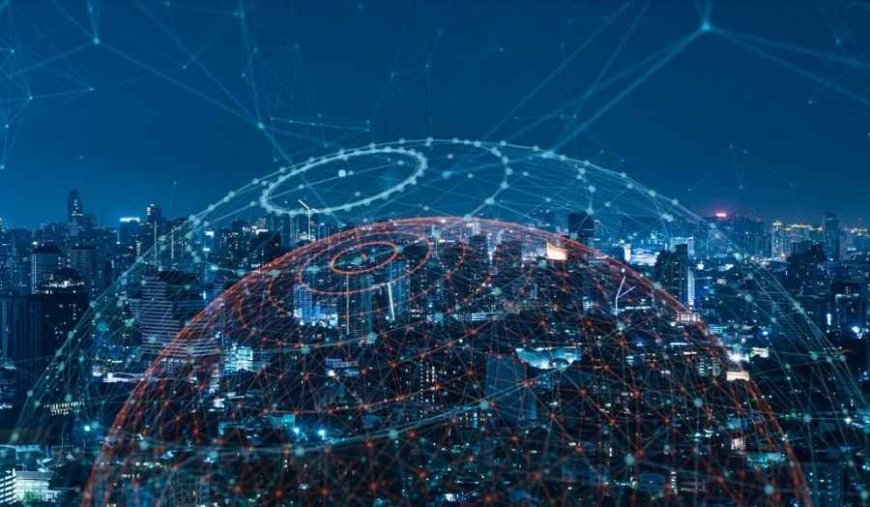Catalyzing Tomorrow The 5G Evolution
In the fast-paced realm of technology, staying connected has never been more critical, and 5G technology has emerged as a transformative force

In the fast-paced realm of technology, staying connected has never been more critical, and 5G technology has emerged as a transformative force in the world of communication and the Internet of Things (IoT). In this article, we delve into the ongoing evolution of 5G technology and its profound implications for communication, IoT, and beyond.
Unveiling the Power of 5G
5G, denoting the fifth iteration of wireless technology, signifies a monumental leap forward in connectivity capabilities. Its defining characteristics include significantly higher data speeds, lower latency, and the ability to support a vast number of connected devices simultaneously. These features unlock a realm of possibilities that extend well beyond faster smartphone downloads.
The Ongoing Evolution of 5G
While 5G technology is already making waves, its development is far from stagnant. In fact, the evolution of 5G continues at a rapid pace. Here are several pivotal domains of advancement:
Ultra-Reliable Low Latency Communication (URLLC): The development of URLLC is pivotal for applications that require instantaneous data transmission, such as autonomous vehicles and real-time remote surgery. 5G networks are being refined to support ultra-low latency, ensuring that data travels with minimal delay.
Massive Machine Type Communications (mMTC): As IoT devices become increasingly prevalent, 5G is adapting to handle the massive influx of connected devices efficiently. This ensures that smart cities, industrial IoT, and other mMTC applications can thrive on 5G networks.
Network Slicing: 5G's network slicing capabilities allow the creation of virtual networks within a single physical network. This ensures that different applications, such as augmented reality (AR), gaming, and mission-critical services, receive the specific network resources they require.
Implications for Communication
The ongoing evolution of 5G holds profound implications for the world of communication:
Enhanced Video Conferencing: 5G's low latency and high bandwidth enable flawless video conferencing experiences, paving the way for more effective remote work and collaboration.
Augmented and Virtual Reality: The seamless streaming of AR and VR content becomes a reality, revolutionizing industries like gaming, education, and healthcare.
Improved Emergency Services: First responders benefit from 5G's reliability and low latency, enabling faster response times and enhanced communication during critical situations.
Implications for IoT
IoT, a network of interconnected devices, is poised for exponential growth thanks to 5G:
Smart Cities: With 5G, smart city initiatives gain momentum. Connected sensors, traffic management systems, and public services become more efficient and responsive.
Industrial IoT (IIoT): Manufacturing and industrial sectors benefit from 5G's mMTC capabilities. Factories become more efficient, and predictive maintenance reduces downtime.
Healthcare: Remote patient monitoring and telemedicine flourish on 5G networks, providing timely and reliable healthcare services.
Beyond Communication and IoT
The impact of 5G extends beyond communication and IoT:
Autonomous Vehicles: 5G networks are crucial for the advancement of autonomous vehicles. Real-time data exchange and instant decision-making are prerequisites for safe self-driving cars.
Smart Agriculture: In agriculture, 5G-powered IoT devices enhance crop monitoring, enabling precision agriculture and sustainable farming practices.
Environmental Monitoring: 5G supports remote environmental monitoring, aiding in disaster prediction, climate research, and conservation efforts.
Challenges and Considerations
While the potential of 5G is immense, it also comes with challenges:
Infrastructure: The deployment of 5G infrastructure, including small cells and antennas, requires substantial investment and regulatory approvals.
Security: As the number of connected devices grows, so does the potential for cyber threats. Ensuring the security of 5G networks and IoT devices is paramount.
Privacy: The massive amounts of data generated by 5G and IoT raise concerns about privacy. Robust data protection measures are essential.
The Road Ahead
As the ongoing evolution of 5G technology unfolds, its transformative impact on communication, IoT, and various industries becomes increasingly evident. The possibilities it presents, from enhanced communication and IoT capabilities to advancements in autonomous vehicles and healthcare, are reshaping our world.
However, realizing the full potential of 5G also requires addressing challenges such as infrastructure deployment, security, and privacy. As we navigate this transformative journey, collaboration between governments, industries, and technology providers will be crucial in ensuring that 5G's promise is realized for the benefit of society as a whole.
5G and its ongoing evolution are not just about faster downloads on our smartphones; they are the building blocks of a connected, intelligent future. The technology is poised to redefine how we communicate, how industries operate, and how our world is interconnected. As we embrace the potential of 5G and its ever-expanding applications, we embark on a journey that will reshape the way we live, work, and interact with the digital realm.
